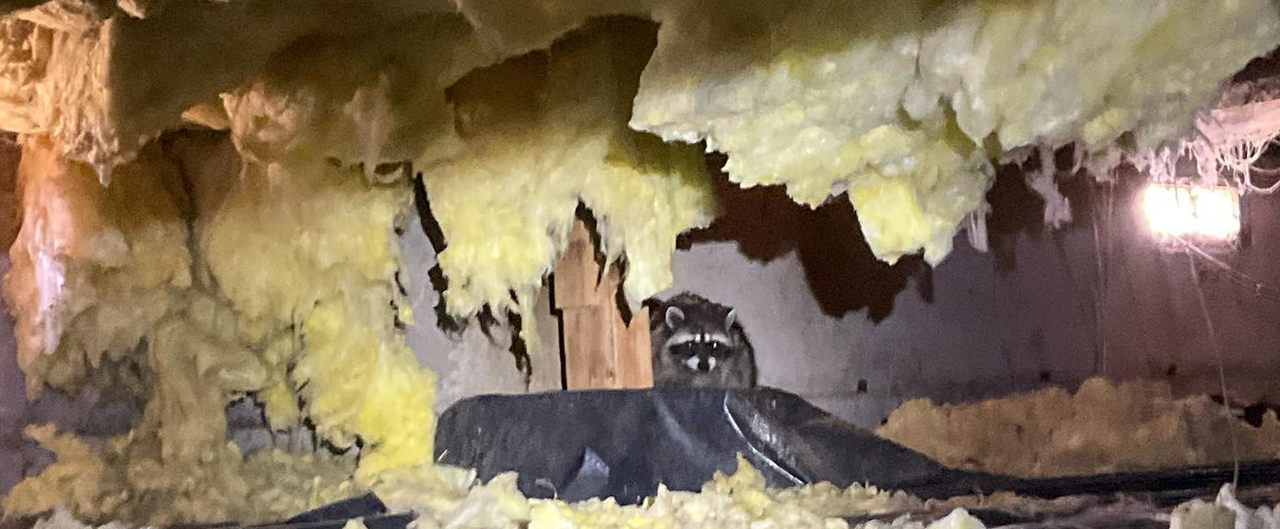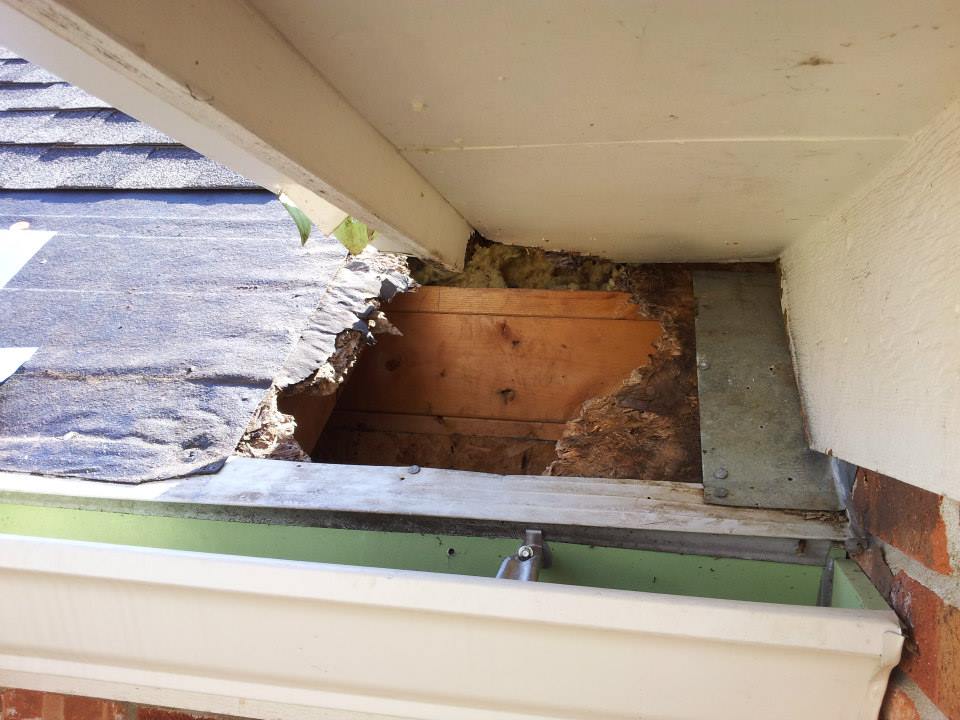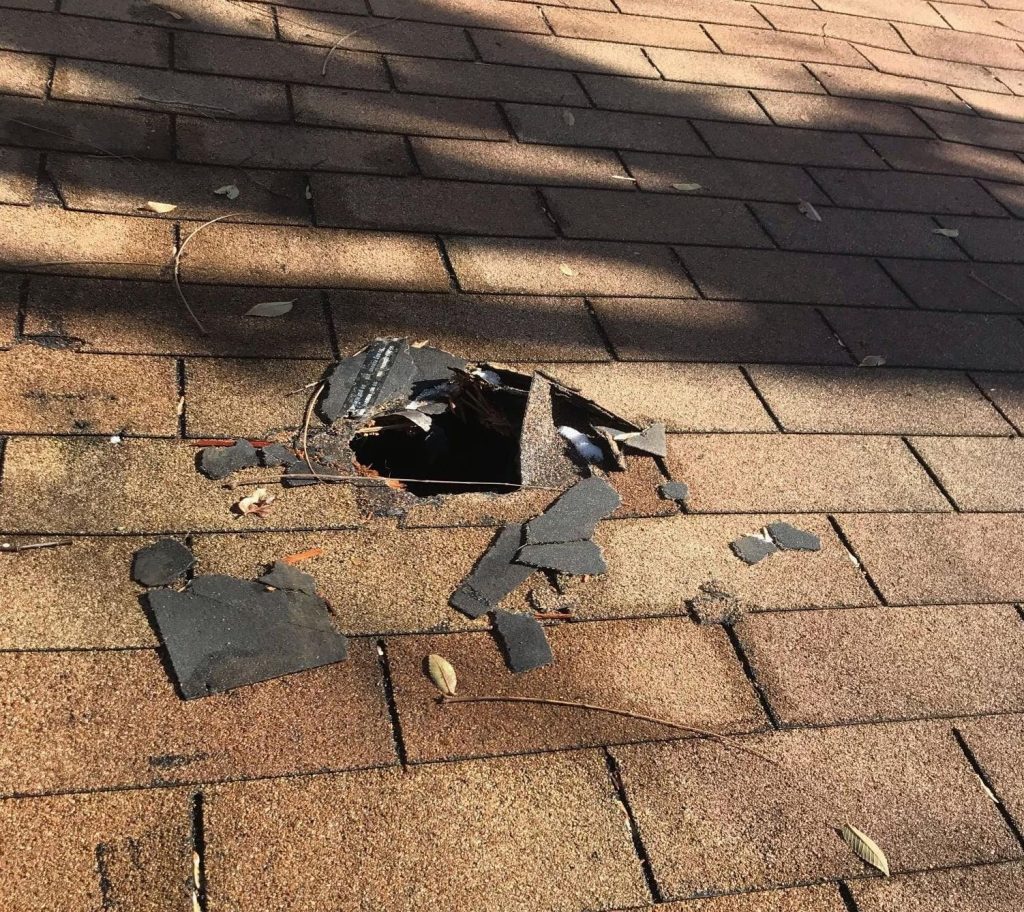

Table of Content
- Raccoons in the House
- Raccoons in Attics
- Raccoons in the Chimney
- Raccoons in Walls
- Raccoons in Basement
- Raccoons in Crawl Spaces
- Raccoons in Trash
- Raccoons on Roof
It’s bad enough when raccoons become a nuisance when ruining gardens or raiding garbage cans, but they can be truly destructive when they inhabit human structures. Raccoons are especially fond of choosing homes for their shelter. In the wild, they create dens in high-up tree cavities as the height gives them protection from predators. But when their natural habitats fall short, they gravitate toward attics and chimneys as these places mimic much of their instinctual natural habitat.
Human structures provide raccoons with the basic necessities of what they need: warmth, shelter, and a safe space in which to raise their young. In addition, they’ve learned that living in proximity to humans provides them with easy and ongoing access to food and water.
Unfortunately, raccoons do a lot of damage to homes when attempting to get into them as well as once inside. They damage and soil insulation, tear or bite through wires, and create an area where their feces will pile up. They can also introduce lice, fleas, and ringworm into a home as well as infectious diseases that can be transmitted to humans and pets when coming in contact with their waste. In addition, raccoons can carry rabies.
Raccoon Entry Points
Need Help with Raccoon Infestation?
Find a Critter Control near you.
It’s not hard to envision how small mice and insects can get into a house, but raccoons are much larger. While they are not small enough to squeeze through tiny gaps in doors, windows, and foundations, they have other physical characteristics that allow them to create their own entry points.
Raccoons are agile and strong. They are excellent climbers and have nimble hands with thumb-like digits on their front paws that can grab, claw and tear their way through a variety of surfaces and materials that make up the outer parts of a building, such as:
- Soffits – On a home’s exterior, soffits are both an aesthetic and functional element. Because they are visible, they add character to a home. Functionally, they protect the rafters from the elements. If soffits are worn, they become an easy target for raccoons looking to find a vulnerable place to break into the attic.
- Vents – Roof vents and wall vents meant to maintain air flow to reduce the moisture that can build up in an attic or household systems such as dryers are an easy way for raccoons to gain entry.
- Chimneys – Uncapped chimneys are a common point of entry for raccoons because they have a horizontal smoke shelf convenient for settling down with kits.
- Roof Returns – This is the part of a roof that comes back to the wall of the house. It’s situated between the end of the roof and a home’s exterior wall. If the roof return is worn or damaged, it becomes an easy place for a raccoon to rip away.
- Metal Flashing – Flashing is a thin, flat strips of metal used around the perimeter of roofing systems and around protuberances such as the chimney. Its purpose is to keep water away from the seams and joints on the roof, so the water does not enter the attic. Raccoons have the strength and skill to rip flashing out of place in order to enter.
- Through the Roof – Raccoons are notorious for making their own entryway when none is available. If they’ve identified an attic as the place they want to use for shelter and a nest, they are known to rip off a perfectly intact section of the roof to get inside. They are incredibly cunning and determined and will do whatever it takes to survive the cold winter months and provide a warm den in which to raise their kits.

Dangers of a Raccoon in Your House
Once infestations of raccoons in houses have been established, the animals are easy to detect. Outdoors, they uproot plants in gardens, rip up paneling, tear through screens, and may even remove chimney covers in their quest for food and shelter.
Raccoons also scratch up fences, trees, and buildings, as well as root through garbage bins and leave trash strewn about lawns.
Furthermore, they commonly set up latrines in close proximity to their den sites. The pests are notorious carriers of rabies, distemper, and roundworm. As these illnesses are spread through contact with raccoons or exposure to their waste, residents of infested homes are at risk of contracting these diseases.
How to Get a Raccoon Out of Your House
Cage traps are the most effective and humane way to remove a raccoon. Direct capture is not commonly used because raccoons are a rabies vector species. If legal, a healthy trapped raccoon will be relocated with written permission. When babies are removed from an attic, our wildlife specialists seek help from a local wildlife rehabilitation center.
Learn more how to get rid of raccoons
How to Stop Raccoons From Entering Your House
Since raccoons are drawn to residential neighborhoods by the availability of food, limiting their access to favorite foodstuffs can reduce the possibility of attracting the pests. Getting fitted lids that lock onto trash bins discourages raccoon foraging. Additionally, property owners should bring garbage cans inside garages overnight. To further deter the presence of raccoons in the house, individuals should install covers on chimneys (like the one in the image below) and regularly monitor building exteriors for holes that may invite raccoons inside.
Here are some tips to prevent raccoons from entering your home:
- Trim any trees that provide access to your roof.
- Keep your yard clear of debris that can be utilized as nesting material.
- Inspect your property for any potential entry points. If any entry points are found, have them repaired.
- If you have a chimney, ensure it has a sturdy, tight fitting cap.
- If you have a crawlspace, ensure the crawlspace door fits tightly.
- Keep your doors closed.
- If you have a doggy door or cat door, ensure it is inaccessible after dark.
- If you have a pool, always keep it covered after dark if you are not using it. You do not want a raccoon to defecate in your pool as their feces contains harmful bacteria.
Professional Raccoon Removal from Homes
Since raccoons are aggressive when they feel threatened and carry several harmful diseases, individuals should contact trained professionals to deal with raccoons in homes. Our specialists possess the tools and understanding to deal with the often temperamental animals safely and humanely.
Learn more about raccoon removal.
Get them out.
Keep them out.®
Experiencing a wildlife or pest issue? We can help! Complete this form and your local Critter Control® office will contact you to assist.
- How to Get Rid of Raccoons
- Are Raccoons Dangerous?
- Raccoon Trapping Service
- Raccoon Control
- Baby Raccoons
- Dead Raccoon Removal
- Raccoon Diseases
- Do Raccoons Hibernate in Winter?
- Raccoon Damage
- Raccoon Diet
- Raccoon Poop
- Raccoons In Yards
- Raccoons in Basements
- Raccoons in Chimneys
- Raccoons in Crawl Spaces
- Raccoons in Trash
- Raccoons in Trees
- Raccoons in Walls
- Raccoons on Roofs & in Soffits
- Raccoon Sounds
- Raccoon Tracks
- Raccoons in Attics & Ceilings
- What Does a Raccoon Look Like?